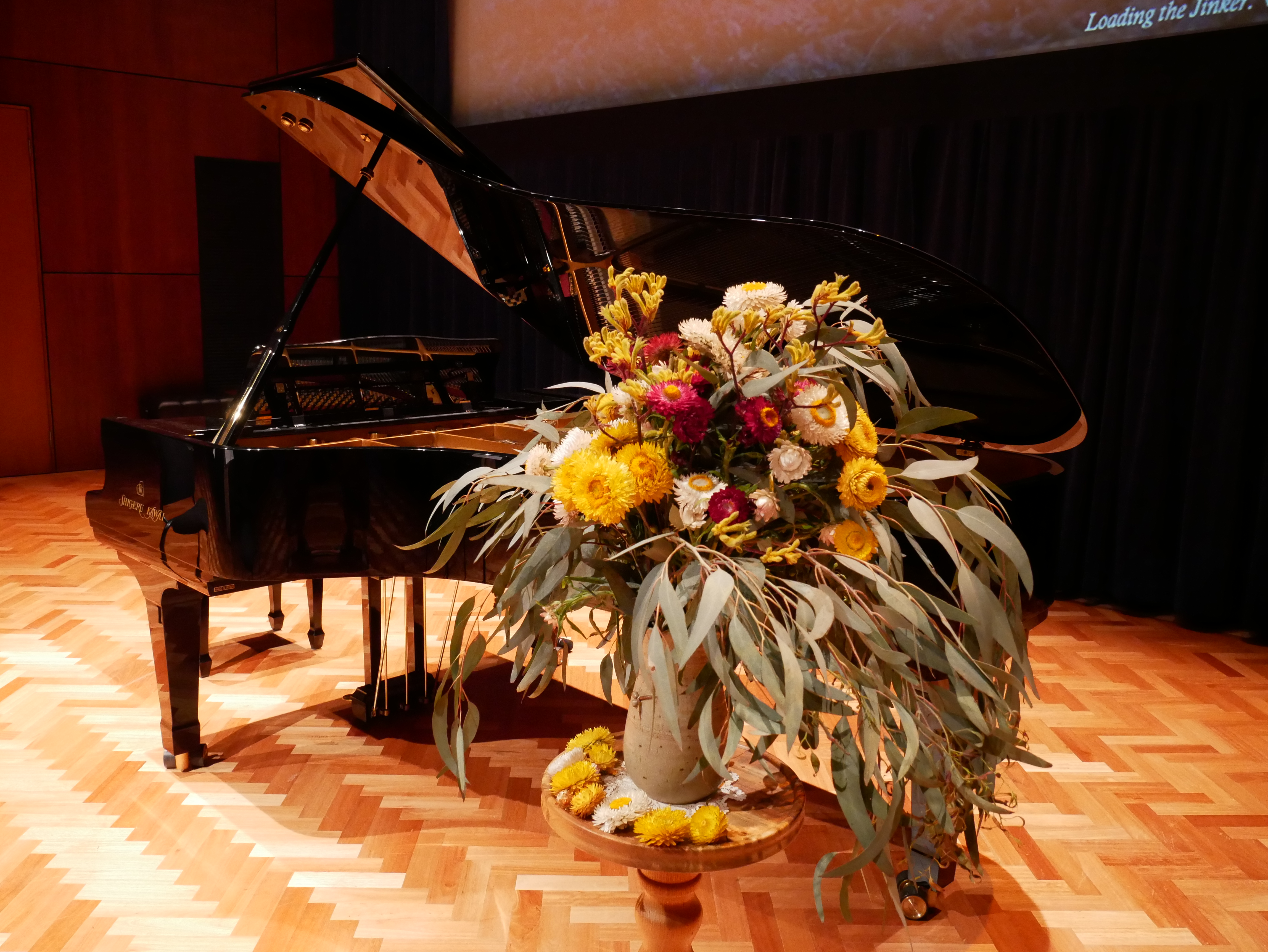The word “Heritage” is a rich term that has been summed up as “antiquities, roots, identity, belonging” (Rico & Lafrenz Samuels, 2015, pp. 6-7). The concept of Heritage is more than historical; it strongly ties the past to the present and the future, with perpetual relevance to society through the foundational and formative significance of events, places and cultural artefacts. Here, in the context of Australian repertoire for piano trios, I use the term heritage to refer to an exploration of repertoire – and its surrounding narrative and tradition – from the first few decades of the emergence of the genre.
The “Heritage” performance was held in the evening of 3 December 2019, in the Ian Hanger Recital Hall at Queensland Conservatorium, Griffith University, in Southbank, Brisbane. The performance was presented by the Corymbia Piano Trio, consisting of Jason Tong (violin), Kirsten Tong (cello), and Maree Kilpatrick (piano). Works featured included Percy Grainger’s Colonial Song; Frederick Septimus Kelly’s Trio in B flat for piano, violin and violoncello; Miriam Hyde’s Fantasy Trio Op. 26 and Fantasia on Waltzing Matilda; Dulcie Holland’s Trio for piano, violin and cello, movements I & II and Matthew Hindson’s 1915.
The curation of the Heritage performance reflected three strong narrative topics which emerged in researching the context of the works. The first was the strong cultural ties between Australia and UK/Europe during that time. Grainger and Kelly both studied in Frankfurt, though not at the same time, and Hyde and Holland in London. There are strong influences of the English pastoral school in the first five works, and of Brahms in Grainger’s style and especially in Kelly’s early work. The second narrative topic that emerged was the Australian cultural identity and attitudes that emerged from the Colonial period, which can be seen in especially in works like Grainger’s Colonial song Hyde’s Fantasia on Waltzing Matilda. The third narrative topic was the impact of WWI and WWII on each of the composers’ lives and work; Grainger and Kelly both joined the armed forces, and Kelly was tragically killed at the Somme. Holland’s period of study in England was cut short at the onset of WWII; and Hyde’s husband left for WWII within days after their wedding. The final work, 1915 by Matthew Hindson, is here included as a sort of prologue, and reflects on what life was like for a young person during especially World War II, compared to today.
Together with the live presentation of works, there were program notes which have been included into each of the individual pages of the featured works; a powerpoint presentation which featured titles, photos, Australian late 19th and early 20th century artwork, and media such as a snippet of Grainger’s solo piano-roll recording of Colonial Song, and snippets of audio and video interviews with Hyde and Holland.
Note: live recordings of the individual works are included on their pages, under featured works; but due to copyright restrictions I am unable to share a recording of the whole event.
